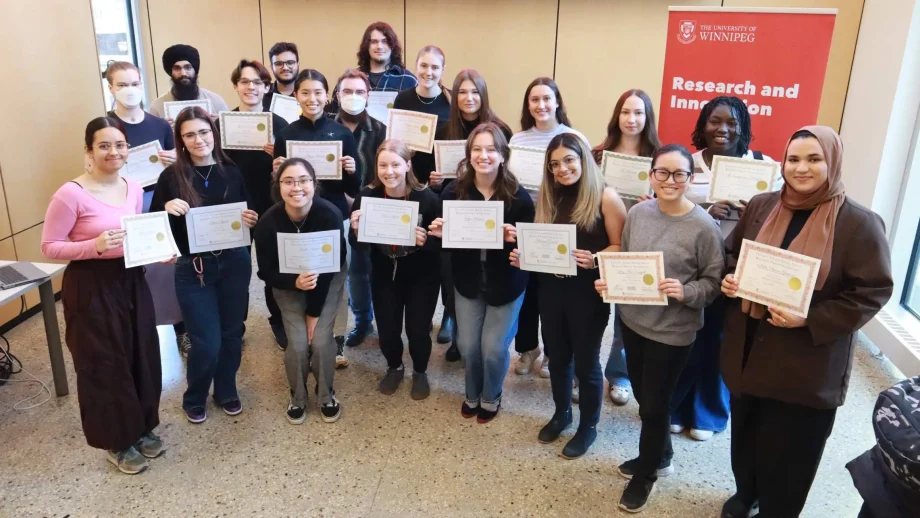The work of UWinnipeg chemistry professor Chris Wiebe and his team has been featured in a recent article by the Canada Foundation for Innovation.
The article by Malorie Bertrand, titled “Innovative facilities of the (very near) future”, highlights six new Canadian research centres.
Here is the section on UWinnipeg, called “Through the looking glass”:
Materials science is, put simply, the study of matter. Chris Wiebe and his team at the University of Winnipeg study magnetic matter used to store large amounts of data in small devices such as cell phones and laptops. Wiebe manipulates magnetic material to increase storage capacity without increasing material size. He has established the Prairie Research Institute for Materials and Energy (PRIME), a crystal growth and materials characterization facility set to be in full operation by mid-January, which will be housed in the new Richardson College for the Environment and Science complex.
The easiest way to study a material is in its purest crystal form. Using PRIME’s CFI-funded high-temperature image furnace, Wiebe and his team can grow large, single crystals of different materials for energy storage devices, new superconductors and other technological spin-offs. “There are only about a half dozen image furnaces in Canada and ours is the only one in the Prairie provinces,” he says.
Wiebe says these furnaces are critical for materials science. They allow scientists to watch crystal growth without being blinded by its light. In an image furnace, the area of extreme heat is so small, it allows for safe, close observation. “It’s revolutionized how we process and make new materials,” says Wiebe. He is excited about what he will be able to do with the furnace. The best crystals in the world are grown in Canada. “This country is very well known for its strength in materials,” he says. “Now we’re able to grow crystals in our lab along with only a handful of labs in Canada.”




